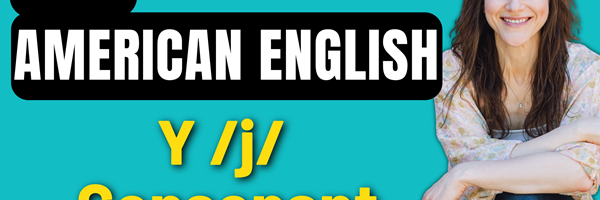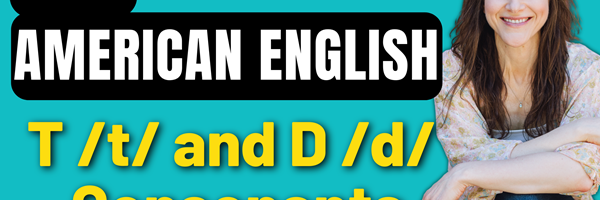(Video Transcript)
Well
Award
Let’s learn how to pronounce the W consonant sound in American English.
How to pronounce the W /w/ consonant
The W consonant sound is a glide consonant in American English. This means that the articulators have some movement as you say the sound, but they do not touch to stop the airflow. For the W consonant, there are two movements that happen. The lips move forward and round into a tight circle while the back of the tongue moves up and back towards the soft palate. But the airflow is not stopped by this movement. Instead, the airflow is continuous. The W consonant is also a voiced consonant, which means the vocal cords are turned on as you say it.
W, W, W
Glide consonants in American English
Glide consonants are also called semivowels, which means the glide consonant is very similar to a vowel, but they don’t function like a vowel in a word. The W glide consonant is similar to the OO as in shoe vowel in American English. Listen to me say the W consonant and the OO vowel side by side. Notice how they sound similar.
W, OO, W, OO
To make the W consonant sound, the jaw opens slightly. The lips move forward and round into a tight circle. The tongue arches moves up and back towards the soft palate, and the sides of the tongue may rest against the inside of the bottom of the upper back teeth. The tongue tip is down. There is tension in the lips as they round and the corners come in.
There is secondary tension in the throat as the vocal cords come together and tense slightly.
W, W, W
This helps to shape the airflow as it travels from the throat and out through the rounded lips.
Watch an MRI of the W consonant sound. This MRI is a real person who is pronouncing the W consonant sound in real time. The MRI was taken from the side of her face, and I slowed it down to half speed. Watch how the tongue arches up and pulls back towards the soft palate, and the lips round into a tight circle but do not touch.
Let’s take a closer look at the W consonant sound.
W /w/ consonant in slow motion
Here is the W consonant in isolation. The lips come forward and round into a tight circle. You can’t see the tongue, but it pulls up and back towards the soft palate, and the vocal cords tense slightly to constrict the airflow. The vocal cords turn on and vibrate.
Now the word with. Again, lips forward and round, tongue pulls up and back towards the soft palate, vocal cords tense and vibrate. Then the sound is released into the IH as in bit vowel.
Now the word award. Same lip and tongue movement happens here: lips move forward and round into a tight circle, tongue pulls up and back, vocal cords tense and vibrate, sound is released into the OR as in door vowel.
This sound does not occur at the end of words or syllables, but the letter W can occur in the spelling, like in the word show. But remember, the letters O and W are pronounced like the OH diphthong, not the W consonant.
Practice: W /w/ consonant
Let’s practice a few words together. Say the words with me.
Wait, W, wait
Twice, W, twice
Kiwi, W, kiwi
Thanks so much for practicing the W consonant sound with me. I hope this video was helpful! But we don’t have to end the practice here - let’s keep working together! Check out the additional practice videos of the W consonant sound in English Pro, my comprehensive online accent training community. The details on how to enroll in English Pro are in the description below. Thanks, and have a great day!
And I'd love to hear from you - contact me to learn how we can work together to perfect your American English pronunciation!



